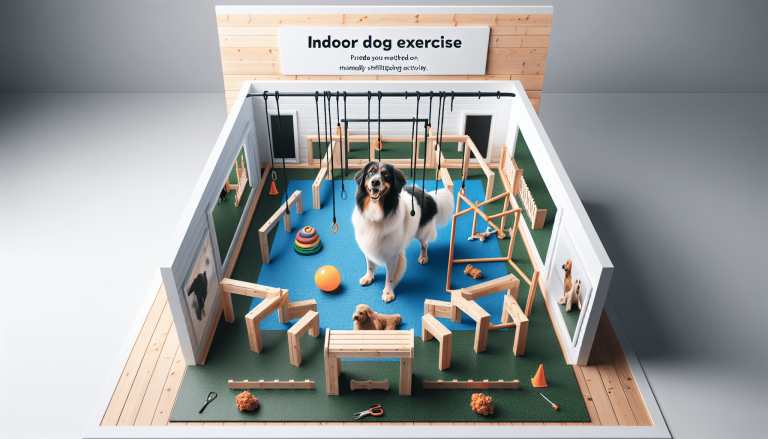Finding the perfect pet for your family can be an exciting and rewarding experience. Whether you’re considering a cuddly cat, a playful pup, or a small critter, choosing the right pet is a big decision. In this article, we will explore some helpful tips and considerations to help you navigate the process of finding the perfect pet that will fit seamlessly into your family dynamic. From understanding your family’s lifestyle and preferences to considering the needs of the pet itself, we’ll guide you on this journey to finding your family’s newest furry friend.
Table of Contents
ToggleConsiderations for Choosing a Pet
When it comes to choosing a pet for your family, there are several important factors to consider. Before diving into the world of pets, take a moment to evaluate your lifestyle. Consider your daily routine, work schedule, and any time constraints that may affect your ability to care for a pet. It’s important to choose a pet that fits seamlessly into your family dynamic.
One of the key considerations is the size and space requirements of the pet. Do you live in a small apartment or a house with a large yard? Some pets, like dogs, may require ample space to roam and play, while others, like cats, can adapt to living in smaller spaces. Be sure to consider the space you have available and choose a pet that will thrive in that environment.
If anyone in your family has allergies or sensitivities, it’s crucial to think about this when choosing a pet. Some pets are considered hypoallergenic, meaning they are less likely to cause an allergic reaction. Research different breeds or species to find out which ones are more suitable for allergy sufferers in your family.
Lastly, consider your family’s activity level. Are you an active family that loves outdoor adventures, or do you prefer a more relaxed lifestyle? Certain pets, like dogs and some small mammals, require regular exercise and stimulation, while others, like cats and fish, may be more low-maintenance. It’s important to choose a pet that aligns with your family’s energy level and activity preferences.
Types of Pets to Consider
Now that you’ve evaluated your lifestyle and considered the necessary factors, let’s explore the different types of pets you can consider for your family. There are many options to choose from, so it’s important to keep an open mind and find the right fit for your family’s needs and preferences.
Dogs are known for their loyalty and companionship. They come in various breeds, sizes, and temperaments, offering options for families of all kinds. Cats, on the other hand, are independent yet loving creatures that can bring joy and comfort to your home. Small mammals like rabbits, guinea pigs, and hamsters can be excellent choices for families with limited space or allergies.
If you’re looking for a pet that can provide lovely melodies and vibrant colors, birds might be the perfect fit. Fish, on the other hand, provide a soothing and visually captivating presence to any home. Reptiles and amphibians can be fascinating pets for those interested in the unique world of cold-blooded creatures.
For those seeking something more exotic, there is a range of exotic pets to consider, such as sugar gliders, hedgehogs, and even tarantulas. Lastly, if you have the space and resources, farm animals like chickens, goats, or even miniature horses can make wonderful additions to your family.
Researching Different Breeds and Species
Once you have a general idea of the type of pet that suits your family, it’s time to delve into the world of different breeds and species. Start by making a list of desired traits you’re looking for in a pet. Are you seeking a playful and active companion, or would you prefer a more relaxed and independent pet? Consider aspects like size, temperament, and maintenance needs.
Researching breed characteristics is also important to ensure you find a pet that matches your family’s lifestyle. Different dog breeds, for example, have varying exercise requirements, grooming needs, and trainability. Cats can also vary in terms of activity levels, sociability, and tendencies such as whether they are more prone to being indoors or outdoors.
Temperament is another crucial factor to consider. Some breeds or species may be better suited for families with children, while others may prefer a quieter environment. Be sure to choose a pet that will get along well with your family and fit seamlessly into your daily routine.
Cost of care and maintenance is another important consideration. Some pets require specialized diets, regular vet visits, grooming, and ongoing supplies, all of which can add up over time. Knowing the financial commitment associated with different breeds or species will help ensure you can provide the necessary care and support for your new family member.
Finding a Reputable Breeder or Shelter
Once you have a clearer picture of the type of pet and breed that suits your family, it’s time to find a reputable breeder or consider adoption from a shelter. If you’re opting for a specific breed, research reputable breeders in your area. Look for breeders who prioritize the health and well-being of their animals, provide proper socialization, and conduct thorough health testing.
Alternatively, consider visiting local animal shelters. Shelters are filled with loving pets in need of a forever home. Adoption from a shelter not only provides a home for a pet in need but also allows you to save a life. Many shelters conduct behavioral assessments and can provide valuable information about the pet’s personality and compatibility with families.
There are also adoption and rescue organizations that specialize in specific breeds or types of pets. These organizations often foster pets before placing them in permanent homes, allowing for a smoother transition and ensuring their compatibility with your family.
Interacting with Potential Pets
Before making your final decision, it’s essential to spend time with potential pets and observe their behavior and temperament. Arrange to meet the pet in person, whether it’s at a breeder’s facility, a shelter, or a foster home. Spend time playing with the pet and see how they react to you and your family members.
Observe their behavior to ensure they are comfortable and show signs of a healthy and well-adjusted pet. Look for signs of anxiety, aggression, or fear. Additionally, if you have children, pay attention to how the pet interacts with them. A pet that is gentle, patient, and tolerant of children is crucial for a family-friendly environment.
Considering Long-Term Commitments
Bringing a pet into your family is a long-term commitment, so it’s important to consider the future implications. Think about the pet’s lifespan and ensure you are prepared to provide a loving home for the entirety of their life. Some pets, like birds and certain reptiles, can have long lifespans, while others, like dogs and cats, have varying lifespans depending on breed and size.
Consider the financial commitment associated with pet ownership. Factor in the cost of food, veterinary care, grooming, toys, and supplies. It’s important to ensure you can provide proper care without straining your finances. Additionally, consider the time commitment required for the pet’s daily care, exercise, and training needs. Make sure you are willing and able to devote the time necessary to provide a happy and healthy life for your pet.
Lastly, plan for potential changes in circumstances. Life can be unpredictable, and your family’s circumstances may change over time. Consider how these changes, such as job changes, moving, or the addition of new family members, may impact your ability to care for your pet. It’s crucial to have a plan in place to ensure your pet’s well-being and happiness in any situation.
Preparing Your Home for a Pet
Before bringing your new pet home, it’s important to pet-proof your living space to ensure their safety. Remove any toxic plants, chemicals, or small objects that could pose a choking hazard. Secure loose wires and cords, and ensure that any potential escape routes are blocked off. Creating a safe environment will help prevent accidents and ensure your pet’s well-being.
Next, create a designated space for your pet within your home. Whether it’s a cozy dog bed, a scratching post for your cat, or a comfortable enclosure for your small mammal, having a dedicated area will make your new pet feel safe and secure. Consider the type of pet you’re bringing home and provide them with the necessary space and amenities.
Invest in the necessary supplies and equipment before bringing your pet home. This may include food and water bowls, a leash and collar, litter boxes, bedding, toys, and any specific supplies recommended for your chosen pet. Being prepared with the essentials will help make the transition smoother for both you and your new family member.
Making the Final Decision
When it comes time to make the final decision, it’s crucial to involve all family members in the process. Discuss the pros and cons of each option and consider everyone’s preferences and concerns. Assign specific responsibilities to each family member to distribute the care and ensure everyone is actively involved.
While logic and research play a significant role in decision-making, it’s also essential to listen to your intuition. Pay attention to your gut feeling and choose a pet that you feel a connection with. A sense of chemistry and compatibility can go a long way in building a strong and loving bond.
If you’re finding it difficult to make a decision on your own, don’t hesitate to seek professional advice. Veterinarians, animal behaviorists, and experienced pet owners can provide valuable insights and guidance on finding the perfect pet for your family.
Introducing the Pet to Your Family
Once you’ve made your decision and brought your new pet home, it’s time to focus on a smooth integration into your family. Prepare everyone for the new arrival by discussing the rules and expectations. Assign tasks such as feeding, cleaning, and grooming to ensure everyone is involved in the care process.
Take it slow and allow for an adjustment period. Remember, your new pet is entering a whole new world and may need time to acclimate. Provide a safe and quiet space for your pet to retreat to when they need some alone time. Gradually introduce them to different areas of your home and family members to avoid overwhelming them.
Establishing routines and boundaries is essential for both your pet’s well-being and your family’s sanity. Stick to a consistent schedule for feeding, exercise, and training to help your pet adjust and thrive. Set clear rules and boundaries to ensure a harmonious living environment for everyone.
Building a Strong Bond with Your Pet
Building a strong bond with your pet requires time, effort, and patience. Spend quality time with your pet each day, engaging in activities they enjoy. Whether it’s playing fetch with your dog, grooming your cat, or cuddling with your small mammal, these moments will strengthen the bond you share.
Socialize your pet and expose them to different environments, people, and animals. This will help them develop confidence and reduce anxiety in new situations. Positive reinforcement techniques, such as treats, praise, and clicker training, can be used to teach your pet desired behaviors and strengthen your bond.
Remember, each pet has its own unique personality and preferences. Pay attention to your pet’s individual needs and adjust your interactions accordingly. The more you invest in the relationship, the stronger and more rewarding the bond will become.
Finding the perfect pet for your family is an exciting and rewarding journey. By considering your lifestyle, researching different breeds or species, interacting with potential pets, and making thoughtful decisions, you are setting the stage for a successful and fulfilling pet-parent relationship. With proper care, love, and attention, your new furry, feathered, or scaly friend will bring joy and companionship to your family for years to come.








